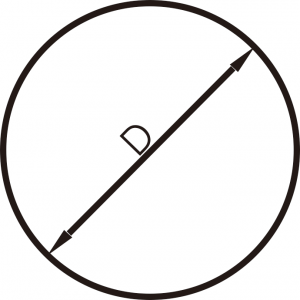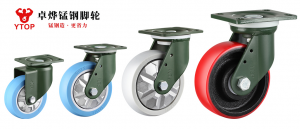Caster size specifications are usually expressed in terms of the diameter of the tire.Units are often in inches (inch) or millimeters (mm).Caster specifications include tire diameter, width, mounting height, and load capacity.Below are some examples of common caster size specifications
Small casters:With a diameter of approximately 25mm to 75mm.Smaller carrying capacity.Suitable for light loads and where a high degree of flexibility is required.
Medium casters:With a diameter of approximately 100mm to 150mm, they have a moderate load capacity and are suitable for medium loads.
Heavy duty casters:With a diameter of about 150mm to 200mm, it has a large load capacity and is suitable for heavy loads.
Extra heavy duty casters:Diameters up to 350mm or more with very high load capacity for special industrial applications.
The diameter of a caster is closely related to its design purpose, load carrying capacity, passageability, stability and the environment in which it is used.Here are some key factors that determine the diameter of a caster:
Carrying capacity:In general.The larger the caster diameter, the The more weight it can carry.This is due to the fact that larger diameter casters have a larger contact area and a stronger structure, the The ability to spread the load better.
Passability:On uneven or obstructed ground.Larger diameter casters for better access over obstacles.Reducing damage to the ground.and provide a smoother scrolling experience.
Stability:Large diameter casters maintain better stability at high speeds or under heavy loads.This is because they have a large moment of inertia.
Environment of use:Depending on the usage scenario, the such as warehouses, factories or outdoor environments.It may be necessary to select casters of different diameters.For example.In warehouses where equipment needs to be moved frequently Larger diameter casters may be preferred to reduce labor intensity.
Equipment Dimensions:The diameter of the caster is also limited by the size of the equipment to be fitted.The design and size of the equipment will determine the available space.This affects the choice of caster diameter.
In summary.The diameter of a caster is the result of a combination of its intended use and working conditions.to ensure that both load-carrying and throughput requirements are met.It also ensures stability and flexibility in use.When designing or selecting casters, the All of these factors need to be carefully weighed.
Post time: Jun-30-2025



